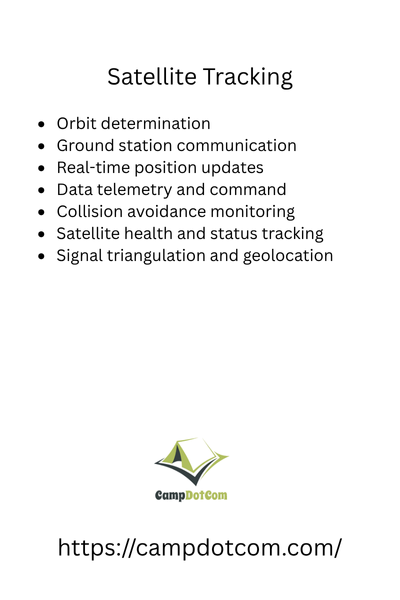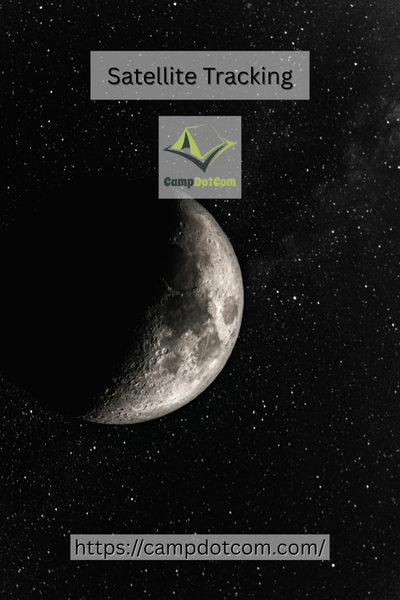Ever found yourself staring up at the night sky, wondering what’s zooming overhead? That’s how I first got into satellite tracking, and honestly, I never expected it to become one of my favorite little obsessions.
So what is satellite tracking, really? Simply put, it is the act of following satellites as they orbit the Earth, whether you are doing it for fun, science, or because you are just plain curious about what is flying above your head.
Read More About Satellite Tracking

The Night I Got Bit by the Satellite Bug
Let me take you back to a clear summer night. I was on a camping trip with friends, no cell signal, barely any light pollution, just stars for days. One of the guys pointed up and said, “That is not a star, it is the International Space Station.” I laughed. “No way.” He pulled out this app and showed me how you could actually track satellites in real time. We watched it streak across the sky in under five minutes. I was hooked.
As an Amazon Associate, I earn from qualifying purchases. Some of the links in this article are affiliate links. This means that, at zero cost to you, I will earn an affiliate commission if you click through the link and finalize a purchase.
The next week, I downloaded the same app, got myself a pair of decent binoculars, and started learning everything I could about satellite tracking.
So… Why Track Satellites?
Glad you asked. Because it is surprisingly fun, and it gives you a whole new perspective on what is going on in the sky.
You know all those GPS satellites that help you navigate to your buddy’s barbecue or find the nearest coffee shop? Or the weather satellites giving you accurate forecasts? Yes, you can actually spot those. Well, not all with your naked eye, but you can track them, learn what they are doing, and sometimes even pick up signals if you are into the techy side of things.
And if you are the kind of person who geeks out over space, technology, or just cool gadgets, satellite tracking is like catnip.
More Things to Know About Satellite Tracking

There are more things to know about satellite tracking, like using prediction apps, understanding orbital paths, and choosing the best viewing times.
What You Need (Hint: Not a Rocket)
One of the best things about this hobby? You don’t need fancy equipment to get started. Really. When I started, I used a free app and my eyeballs.
Most people use smartphone apps like Heavens Above or Sky Guide, which let you know exactly when and where a satellite will be visible from your location. A decent pair of binoculars adds a lot to the experience too, especially if you are trying to catch fainter objects like Iridium satellites, which are now pretty rare but still fun to chase.
Some folks get more serious, setting up ground stations with antennas and radio receivers, but do not let that intimidate you. That is just the deep end of the pool. You can wade in slowly and see where the sky takes you.
Surprising Things You’ll Learn While Satellite Tracking
Here is the part that surprised me the most: once you start tracking satellites, you realize just how many are up there. We are talking thousands, like traffic jam levels of stuff orbiting Earth.
From Starlink swarms to old Soviet weather satellites still making laps, it is wild. You start recognizing certain patterns, like how some satellites always pass overhead at the same time each night, or how some suddenly disappear because they have gone into the Earth’s shadow. It is super cool to see.
And don’t even get me started on satellite flares. Seeing one for the first time is like watching a star suddenly explode in brightness for a few seconds. It never gets old.
A Little Patience Goes a Long Way
If you’re thinking this sounds fun, you’re right. But here’s my honest take: satellite tracking isn’t always instant gratification. You might wait 10 minutes in the cold for a no-show (clouds happen). Or maybe your app says something will be bright, and it turns out to be barely a whisper in the sky.
But when it does work? It’s magic.
There’s something deeply satisfying about knowing that little point of light is a human-made object whipping around the planet at thousands of miles per hour. You’re watching space happen in real-time.
Satellite Tracking: Why You Should Try It
Look, you don’t have to be a NASA engineer or space nerd (though if you are, hey, welcome!). Satellite tracking is perfect for people who love nature, science, or just enjoy discovering something new. It’s low-cost, beginner-friendly, and it’ll make you feel like you’ve got a VIP pass to the space show that’s happening over your head every night.
Plus, it’s a great conversation starter. Trust me—next time you’re at a bonfire or hanging out with friends, point out a passing satellite and drop some knowledge. Instant cool points.
Bringing It All Together with Satellite Tracking
In a world where we’re constantly glued to screens, satellite tracking gives you a reason to look up. Literally.
It’s relaxing, a little nerdy (in a good way), and completely rewarding. Whether you do it solo in your backyard or turn it into a stargazing date night, it’s a hobby that brings a sense of wonder and connection to the big ol’ universe.
So go ahead, download an app, step outside, and let the sky surprise you. Who knows? You might just find yourself falling in love with satellite tracking, one orbit at a time.
